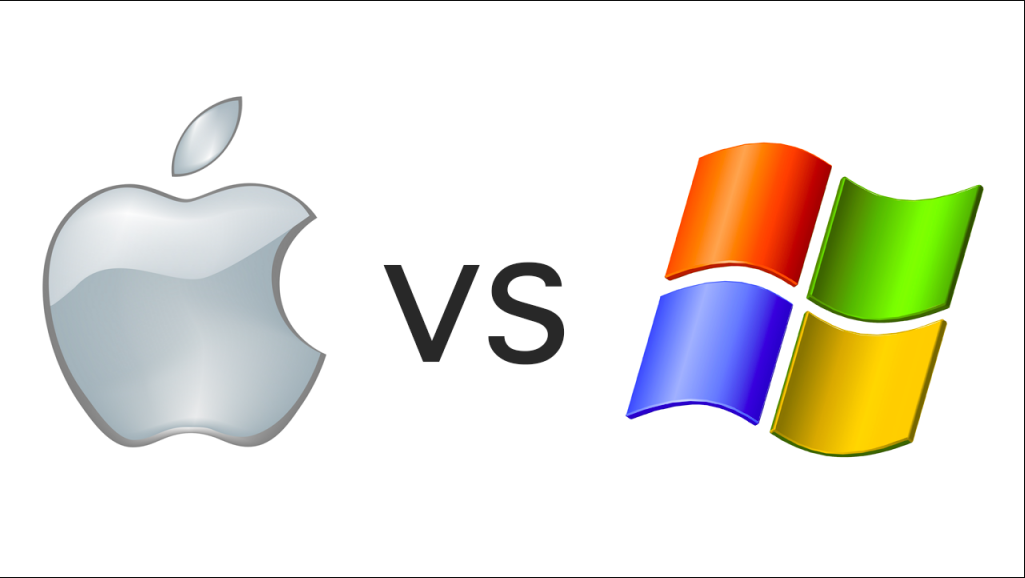Unleashing Marketing Warfare Strategies: Dominating Your Market with Tactical Brilliance
In the battlefield of business, competition is fierce and companies are constantly vying for dominance in their markets. To rise above the competition and secure a winning position, businesses need more than just conventional marketing tactics—they need strategic brilliance. This article delves into the realm of marketing warfare strategies, unveiling the power of tactical brilliance in dominating your market.
Just as military commanders devise strategic plans to outmaneuver their opponents, marketing warfare strategies involve strategic maneuvers to gain a competitive edge. These strategies go beyond traditional marketing approaches, focusing on outsmarting and outmaneuvering competitors through calculated tactics and bold moves.
In this article, we will explore the concepts, principles, and techniques behind marketing warfare strategies. From offensive maneuvers that exploit competitors’ weaknesses to defensive strategies that protect market share, we will uncover the secrets of tactical brilliance that can propel your business to the forefront of your industry.
Through real-world examples and case studies, we will analyze successful marketing warfare campaigns and the principles that underpin their triumphs. We will also examine the potential risks and ethical considerations involved in implementing these strategies.
By the end of this article, you will have a comprehensive understanding of marketing warfare strategies and how they can be harnessed to dominate your market. So, prepare to unleash your tactical brilliance and conquer the battlefield of business with strategic precision.
Understanding the Marketing Battlefield
In the world of business, the market can be likened to a battlefield, where companies engage in fierce competition to capture customers, gain market share, and emerge as victors. This analogy to military warfare helps us understand the complexities of the market and the strategies required to succeed.
Explaining the Market as a Battlefield
Similar to a battlefield, the market is a dynamic and ever-changing environment. Companies are constantly vying for supremacy, aiming to outmaneuver and outperform their competitors. Just as military commanders analyze the terrain and devise strategies, marketers must assess market conditions, consumer behavior, and industry trends to formulate effective plans.
What is a Marketing Warfare Strategy?

Marketing Warfare Strategies can be defined as a set of tactics and maneuvers employed by companies to achieve a dominant market position by outsmarting and outperforming their rivals. These strategies enable businesses to capitalize on their strengths, exploit their competitors’ weaknesses, and seize opportunities in the market.
Origin and Relevance
The concept of Marketing Warfare Strategies was popularized by Al Ries and Jack Trout in their book “Marketing Warfare.” Published in 1986, the book outlined the parallels between military warfare and marketing strategies, offering valuable insights for businesses seeking to conquer their markets. Despite its age, the concept remains highly relevant today, as companies continue to face intense competition and the need for strategic thinking.
Key Players in the Market and Their Roles
Understanding the key players in the market is crucial for any business seeking success. These players include:
- Market Leaders: These are the dominant companies in the industry, often enjoying a significant market share and brand recognition. They set the pace and standards for others to follow.
- Challengers: These are companies that strive to challenge the market leader’s position and gain a larger share. They employ offensive strategies to disrupt the leader’s stronghold.
- Followers: These companies are content with maintaining their position in the market without challenging the leaders directly. They often focus on niche markets or specific customer segments.
- Niche Players: Niche players cater to specialized markets or specific customer needs, operating in a smaller segment but with a unique value proposition.
Competitor Analysis in Marketing Warfare Strategy
To succeed in the market, it is essential to identify competitors and analyze their strategies. This involves:
- Conducting competitive analysis to understand the strengths, weaknesses, opportunities, and threats posed by competitors.
- Monitoring competitors’ marketing tactics, pricing strategies, product offerings, and customer engagement to gain insights and identify potential areas of differentiation.
Analyzing Market Dynamics and Its Impact on Strategic Decision-making
Market dynamics refer to the forces and factors that shape the market, including customer preferences, industry trends, economic conditions, technological advancements, and regulatory influences. Analyzing market dynamics allows businesses to:
- Identify emerging trends and opportunities for growth.
- Anticipate and respond to changes in consumer demand.
- Make informed strategic decisions, such as entering new markets, launching innovative products, or adapting pricing strategies to stay competitive.
Understanding the marketing battlefield and its various elements empowers businesses to make strategic decisions that can give them a competitive edge. In the following sections, we will explore different Marketing Warfare Strategies that businesses can employ to navigate this battlefield and emerge victorious.
The Four Marketing Warfare Strategies
In the world of Marketing Warfare Strategies, there are four primary strategies that businesses can employ to gain a competitive edge. Each strategy has its own unique objectives, tactics, and advantages. Let’s explore these strategies in detail:
A. Offensive Strategies
Offensive strategies, in the context of business and competition, refer to proactive and aggressive approaches adopted by companies to gain a competitive advantage and outperform their competitors. These strategies aim to disrupt the market, capture market share, and weaken the position of rivals. Here are some common offensive strategies employed by businesses:
I. Frontal Attack
The frontal attack strategy involves directly targeting the market leader head-on to capture market share and dethrone the leader.
Objectives: The objective is to outperform the market leader by offering superior products, services, or value propositions.
Examples: Pepsi challenged Coca-Cola’s dominance with the “Pepsi Challenge” taste test campaign.
Advantages: It allows the challenger to gain visibility, attract customers, and weaken the market leader’s position.
Disadvantages: It can be resource-intensive, and the market leader may retaliate with aggressive countermeasures.
II. Flanking Attack
The flanking attack strategy involves targeting an underserved or unexplored market segment where the market leader is less dominant.
Objectives: The objective is to establish a foothold in the market by catering to specific customer needs or offering niche products/services.
Examples: Southwest Airlines focuses on regional airports and offers low-cost flights to attract budget-conscious travelers.
Advantages: It allows the challenger to operate in a less competitive space and gain a loyal customer base.
Disadvantages: The market leader may respond by expanding into the targeted segment, making it more challenging to maintain a competitive advantage.
III. Guerrilla Attack
The guerrilla attack strategy involves employing unconventional and disruptive tactics to create awareness and generate buzz.
Objectives: The objective is to capture attention, change consumer perceptions, and challenge the established norms in the industry.
Examples: Burger King’s “Whopper Detour” campaign encouraged customers to go to McDonald’s for a one-cent Whopper.
Advantages: It leverages creativity and innovation to create a memorable brand image and gain a competitive edge.
Disadvantages: It may not always resonate with the target audience, and the impact may be short-lived if not supported by a strong value proposition.
B. Defensive Strategies
I. Position Defense
The position defense strategy involves strengthening the market leader’s position by emphasizing its superiority and protecting its market share.
Objectives: The objective is to maintain brand loyalty, defend against competitive threats, and reinforce the perceived value of the brand.
Examples: Apple continuously enhancing the iPhone’s features and design to maintain its premium status.
Advantages: It allows the market leader to retain customer loyalty and discourage competitors from challenging its position.
Disadvantages: It may limit innovation and agility, making it difficult to adapt to changing market dynamics.
II. Flanking Defense
The flanking defense strategy involves preemptively occupying market segments or niches that challengers might target.
Objectives: The objective is to establish a presence in adjacent markets to counter potential flanking attacks and maintain overall market dominance.
Examples: Procter & Gamble launching different product lines to cater to various customer segments, such as Pantene for women and Gillette for men.
Advantages: It allows the market leader to preemptively defend against potential threats and diversify revenue streams.
Disadvantages: It requires significant resources and may divert focus from core competencies.
III. Mobile Defense
The mobile defense strategy involves proactively adapting to market changes and quickly shifting resources to counter competitive moves.
Objectives: The objective is to be agile and responsive to changes in the competitive landscape, ensuring sustained market leadership.
Examples: Google continuously evolving its search algorithms and expanding into new markets to stay ahead of competitors.
Advantages: It enables the market leader to quickly respond to emerging threats and seize opportunities.
Disadvantages: It requires a high level of strategic foresight and the ability to allocate resources effectively.
C. Preemptive Strategies
I. Preemptive Strike
The preemptive strike strategy involves being the first to introduce a new product, technology, or innovation to gain a significant advantage over competitors.
Objectives: The objective is to establish market dominance by setting industry standards and capturing customer mindshare.
Examples: Apple’s introduction of the iPhone, revolutionizing the smartphone market, and setting new benchmarks.
Advantages: It allows the innovator to shape customer preferences, create barriers to entry, and gain a first-mover advantage.
Disadvantages: It carries risks and uncertainties associated with untested innovations, and competitors may quickly imitate or surpass the initial offering.
II. Counteroffensive
The counteroffensive strategy involves responding aggressively to competitive actions or threats to regain lost market share or protect existing territory.
Objectives: The objective is to neutralize the competitor’s advantage, regain customer loyalty, and reclaim market leadership.
Examples: Microsoft’s “Scroogled” campaign, which aimed to undermine Google’s credibility and promote Microsoft’s products.
Advantages: It allows the defender to regain momentum, weaken the challenger’s position, and protect the existing customer base.
Disadvantages: It can escalate competition and lead to a costly back-and-forth battle, potentially damaging both parties involved.
D. Guerrilla Strategies
I. Guerrilla Warfare
Guerrilla warfare involves using unconventional and low-cost tactics to compete against larger, more established competitors.
Objectives: The objective is to disrupt the market, gain visibility, and create a perception of being an underdog or challenger brand.
Examples: Dollar Shave Club’s humorous online videos challenging traditional razor brands and promoting their subscription-based service.
Advantages: It leverages creativity, agility, and cost-efficiency to gain attention and appeal to customers seeking alternatives.
Disadvantages: It may not be suitable for all industries or markets, and sustaining long-term growth can be challenging.
II. Ambush Marketing
Ambush marketing involves associating with a major event or competitor to gain exposure without having an official sponsorship or partnership.
Objectives: The objective is to create brand awareness, leverage the event’s popularity, and divert attention from competitors.
Examples: During the FIFA World Cup, Nike’s advertising campaigns featured popular players, even though Adidas was the official sponsor.
Advantages: It allows brands to gain visibility and capitalize on the event’s hype without the associated sponsorship costs.
Disadvantages: It can lead to legal issues and negative brand perception if executed improperly or perceived as unethical.
Each of these Marketing Warfare Strategies has its own advantages and disadvantages, and the choice of strategy depends on factors such as the company’s size, industry, target market, and competitive landscape. By understanding these strategies, businesses can navigate the marketing battlefield strategically and improve their chances of success.
Evaluating Marketing Warfare Strategies
Before adopting a specific marketing warfare strategy, it is crucial to consider several factors to ensure its effectiveness. Here are key aspects to evaluate when selecting a strategy:
1. SWOT Analysis
Conduct a thorough SWOT (Strengths, Weaknesses, Opportunities, Threats) analysis to assess internal and external factors influencing strategy selection. Identify your organization’s strengths and weaknesses, opportunities in the market, and potential threats posed by competitors. Aligning the chosen strategy with your strengths and capitalizing on opportunities can increase its chances of success.
2. Market Conditions and Competitive Landscape
Understand the market conditions, including its growth potential, customer preferences, and trends. Analyze the competitive landscape to identify the positions and strategies of key competitors. Evaluate the market’s attractiveness, such as market size, profitability, and barriers to entry. Choose a strategy that aligns with the market dynamics and provides a competitive advantage.
3. Organization’s Capabilities and Resources
Assess your organization’s capabilities, including expertise, technology, financial resources, and brand reputation. Determine whether your organization possesses the necessary resources to execute the chosen strategy effectively. Consider the feasibility of acquiring or developing the required resources if there are gaps. A strategy that aligns with your organization’s capabilities has a higher likelihood of success.
4. Risk Assessment
Evaluate the risks associated with each strategy. Consider potential risks, such as market backlash, competitive retaliation, resource limitations, and operational challenges. Assess the impact and likelihood of these risks occurring. Develop contingency plans to mitigate risks and ensure your organization’s resilience in the face of challenges.
5. Long-term Sustainability
Assess the long-term sustainability of the chosen strategy. Consider its compatibility with your organization’s vision, mission, and values. Evaluate whether the strategy can adapt to changing market conditions and customer demands over time. Choose a strategy that aligns with your organization’s long-term goals and ensures its continued growth and profitability.
Remember that there is no one-size-fits-all approach, and the most suitable strategy will vary based on the organization’s size, industry type, target market, and specific circumstances. Continuously monitor the market and adapt your strategy accordingly to maintain a competitive edge. Flexibility and agility are crucial in marketing warfare to navigate dynamic environments effectively.
Case Studies: Successful Marketing Warfare Campaigns
Case Study 1: Coca-Cola vs. Pepsi

The rivalry between Coca-Cola and Pepsi is one of the most iconic and long-standing in the beverage industry. Both companies have employed various marketing warfare strategies to gain a competitive advantage.
Overview of the Rivalry and Marketing Strategies: Coca-Cola and Pepsi have consistently engaged in aggressive marketing campaigns to capture market share and increase brand loyalty. They have focused on differentiating their products and creating emotional connections with consumers. Coca-Cola positioned itself as the original, classic cola with a timeless appeal, while Pepsi positioned itself as the youthful and edgy alternative.
Examination of Successful Campaigns and Impact: One of the most famous marketing campaigns was the “Cola Wars” in the 1980s, where both companies launched comparative advertising to highlight their differences. Coca-Cola’s “New Coke” campaign, although initially unsuccessful, generated significant buzz and ultimately reinforced the emotional attachment consumers had with the original Coca-Cola.
Pepsi’s “Pepsi Challenge” campaign invited consumers to blind taste tests, challenging them to choose between Coca-Cola and Pepsi. This campaign helped Pepsi gain market share by positioning itself as the preferred taste. The rivalry between Coca-Cola and Pepsi has resulted in increased brand awareness, fierce competition, and continuous innovation in the beverage industry.
Case Study 2: Apple vs. Microsoft

The competition between Apple and Microsoft has been instrumental in shaping the technology industry. Both companies have employed different marketing warfare strategies to establish their dominance.
Overview of the Competition and Marketing Strategies: Apple and Microsoft have positioned themselves differently in the market. Apple has emphasized its user-friendly and innovative approach, targeting creative professionals and individuals seeking premium experiences. Microsoft, on the other hand, has focused on its wide range of products, software, and enterprise solutions.
Analysis of Successful Campaigns and Outcomes: Apple’s “Get a Mac” campaign, featuring humorous comparisons between Mac and PC users, effectively communicated the simplicity and superiority of Apple products. This campaign helped Apple gain market share among creative professionals and consumers looking for an intuitive user experience.
Microsoft’s “I’m a PC” campaign aimed to counter Apple’s messaging by highlighting the versatility and affordability of Windows PCs. Additionally, Microsoft’s recent marketing efforts have focused on promoting its cloud services and the integration of its products across various platforms.
Case Study 3: Nike vs. Adidas

The rivalry between Nike and Adidas in the sportswear industry has been intense. Both companies have utilized marketing warfare strategies to capture the attention of athletes and consumers.
Overview of the Rivalry and Marketing Strategies: Nike and Adidas have positioned themselves as leaders in the athletic footwear and apparel market. Nike has focused on creating a strong emotional connection with athletes and consumers through powerful storytelling and endorsement deals with top athletes. Adidas has emphasized its commitment to innovation and design, targeting sports enthusiasts and fashion-conscious individuals.
Evaluation of Successful Campaigns and Effectiveness: Nike’s “Just Do It” campaign is one of the most successful and recognizable marketing campaigns in history. It has inspired athletes worldwide and helped Nike establish a strong brand identity associated with performance and determination.
Adidas’ collaborations with popular designers and celebrities, such as Kanye West, have boosted its brand appeal among the fashion-forward audience. Adidas has also leveraged its sponsorship of major sporting events and teams to enhance its brand visibility and credibility.
These case studies demonstrate the power of marketing warfare strategies in building brand equity, influencing consumer perception, and gaining a competitive edge. The success of these campaigns highlights the importance of understanding the target market, creating emotional connections, and effectively differentiating products in highly competitive industries.
Conclusion
Marketing warfare strategies offer a tactical framework for businesses to thrive in competitive markets. With defensive, offensive, flanking, and guerrilla strategies at their disposal, businesses can protect their market share, challenge dominant players, capture new territories, and make bold statements. By carefully analyzing the competitive landscape, conducting a SWOT analysis, and leveraging their resources, businesses can unleash the power of marketing warfare strategies to gain a competitive edge and achieve their marketing objectives. Get ready to wage war and emerge victorious on the battlefield of business.
